
The Answer to the Prettiest DIY Bouquets? Your Vegetable Garden
Look beyond the bloom.
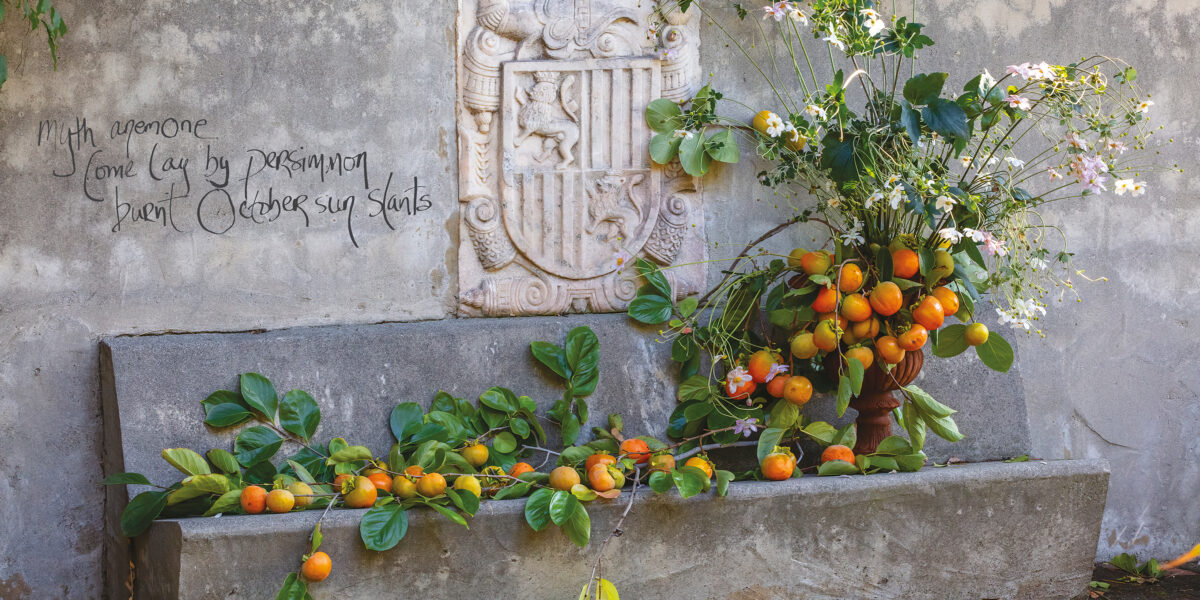
Ian Hughes
The trend of growing your own flower factory is nothing new. In fact, with heirloom seed varieties readily available from many of the West’s premier floral farms, most gardeners have already started to incorporate a dedicated bloom cutting section to their plots. But have you considered browsing your vegetable garden when it comes to creating show-stopping arrangements? Not only is there a whimsical world of botanical exploration hiding inside your raised beds, but also among your fruiting trees and surrounding landscape.
When I think about unexpected uses of botanicals in arrangements, artist and author Louesa Roebuck immediately comes to mind, whose “cinematic floral sculptures” have graced clients such as Vivienne Westwood and Michelle Obama. Her celebration of California’s landscape and use of organic architectural shapes set her apart when it comes to honoring nature in artistic forms. She has inspired me and countless others to think outside of the cut flower paradigm and be mindful not only of what you grow for bouquets, but how to assemble that bounty into one of a kind works of art.
In Louesa’s latest book, Punk Ikebana, she deconstructs our modern perceptions of floral design and encourages you to break the rules. It’s time to awaken your creativity by using what’s available in your own backyard and turn away from growing traditional blossoms that might not be suitable for your climate. Think simple architectural arrangements of radicchio paired with blooming branches of cherry blossom, vintage vases spilling over with kumquats and fennel—even passion vines and nasturtium are given center stage. There is so much inspiration to unearth in your own garden, no matter if you have trees to trim or just a few patio pots filled with herbs to pluck from.
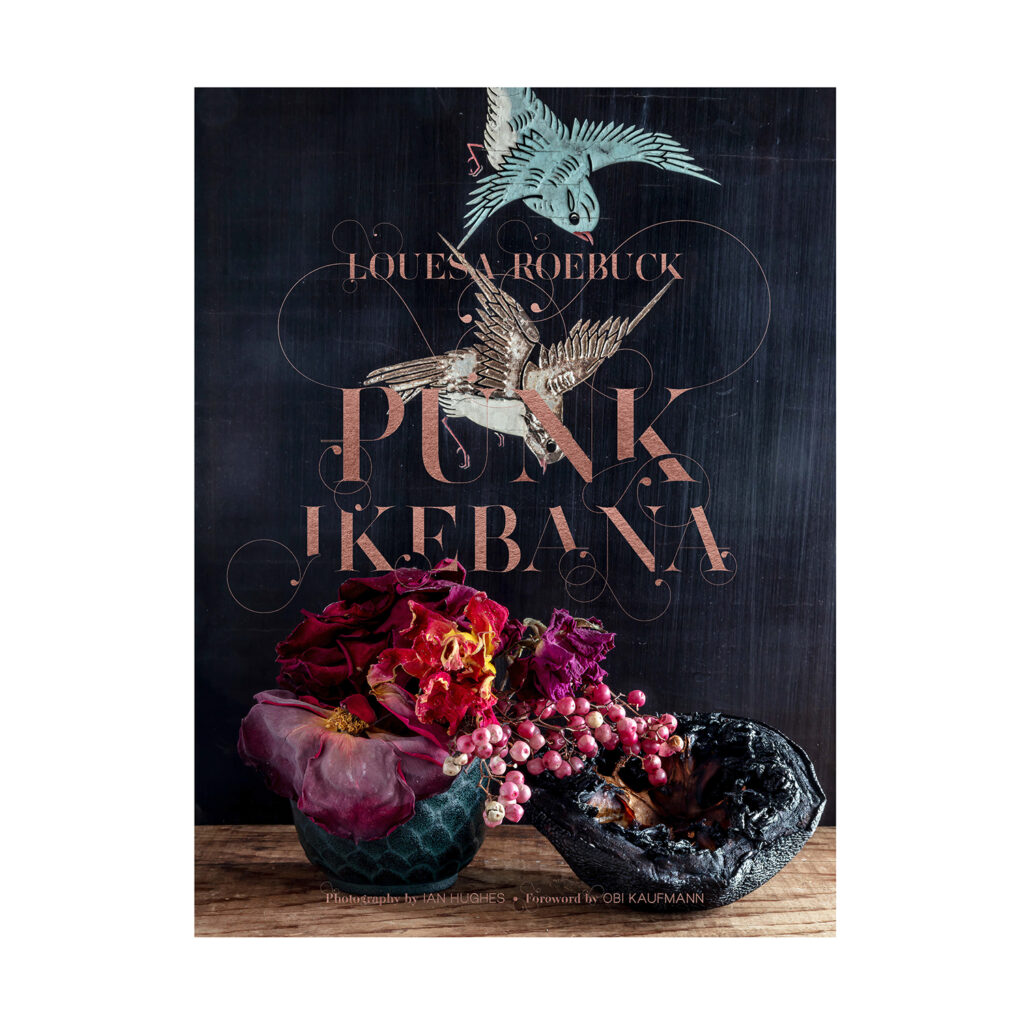
Courtesy of Amazon
This season we hope you look at your garden with a fresh set of eyes and uncover unique vase-worthy botanicals that will breathe new life into your home. Here Louesa shares her tips on how to tap into the existing bounty of your garden for out of this world arrangements.
1. Look Beyond the Bloom
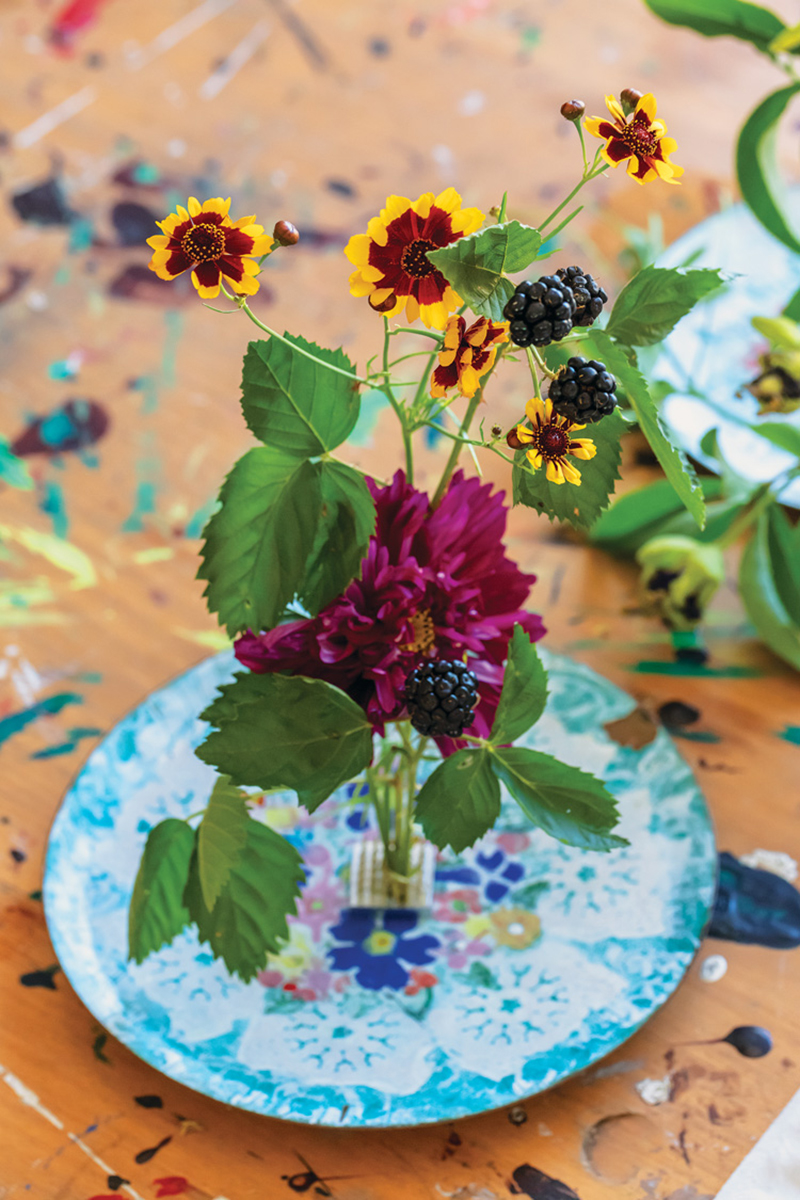
Ian Hughes
When it comes to creating garden-grown bouquets without using typical blooms, training your eye to appreciate the underrated uniqueness around you is key. Look for plants with sculptural seed heads, or unique leaf shapes or patterns—even vining tendrils with berries and vegetables can open up a new world of botanical masterpieces.
There’s no doubt Louesa has a love for fennel and passion vines, as both make a regular appearance in her work. Both are easy to grow (or forage), so there will be no shortage of materials to play around with once you get your hands on them. She appreciates “green creatures in the garden that spread and ‘take over,’ so don’t over-prune them. Fennel is also an early and enduring touchstone—I use it tall, medium, small, and in all stages of its aromatic life.”
When it comes to your vegetable patch, Louesa suggests you pay attention to okra, fruit trees, tomatoes, berry brambles, malamar spinach, and anything that has gone to seed. She notes that Queen Anne’s lace, nasturtium, persimmons, wild clematis, jasmine, magnolias, and anything in your edible garden including the green fruits on the branch are all fair game when it comes to reimagining your cut flower alternatives.
For smaller gardens or those growing in pots, she suggests herbs as an easy arrangement alternative that has maximum impact “Herbs, herbs, herbs,” she sings, “left to go to seed, spreading, big and weird.” Louesa also loves planting scented and unusual geraniums, noting “they are extremely drought tolerant, tough as nails, we’ve rooted many from former installations, I adore them in our garden and in arrangements.” For those who love roses, Lady Banks is also recommended as a great low-water alternative to otherwise thirsty heirloom blooms.
Most importantly, she encourages you to “plant what you love and what thrives with little water or human hand.”
2. Style According to Season
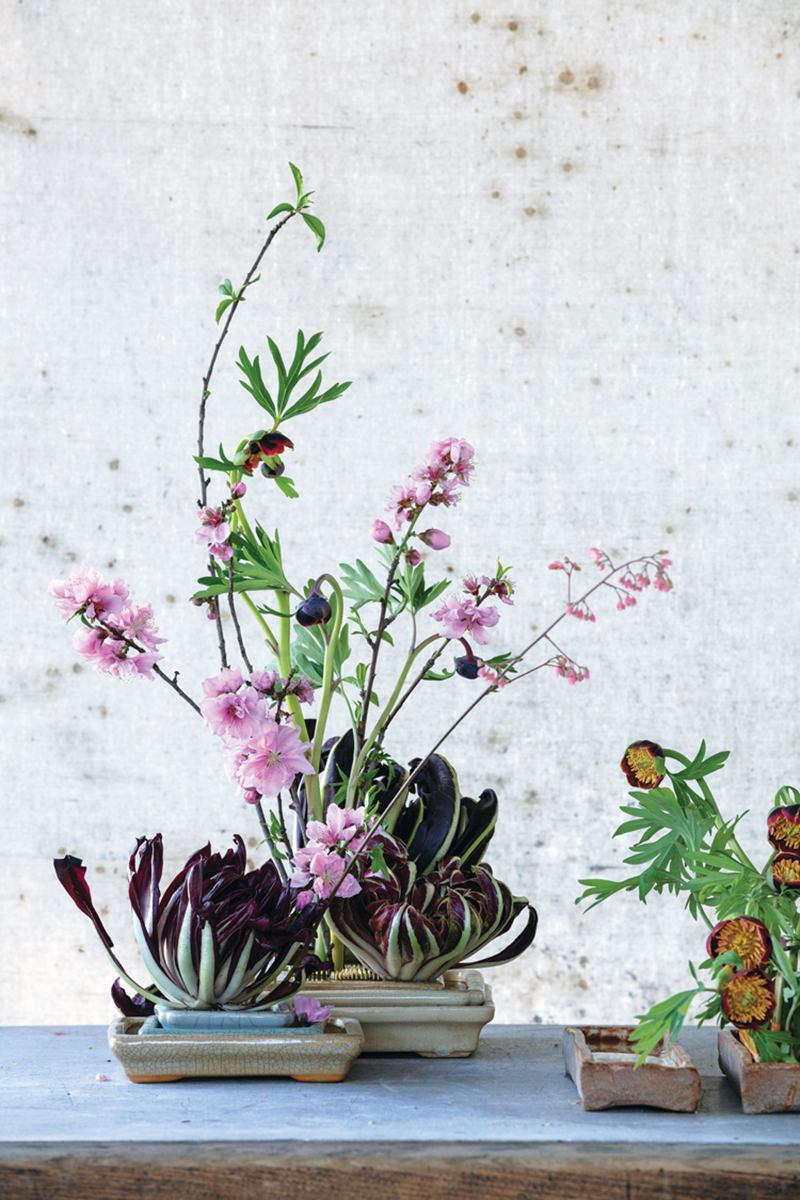
Ian Hughes
Floral arts, especially ikebana, have a reputation of being very formulated and precise. Louesa is here to inspire you to do a little rule-breaking and listen to what nature tells you. “My intention of this ikebana practice is to fully see, recognize, honor, and place the stripped down beauty of that passion vine with flowers and fruit, the fleetingness of a wild clematis, the romance of a blown-out heirloom rose, the haunting moodiness of late fall tomatoes still on the vine… with as little noise as possible.”
Her approach starts with place (here), season (now), and then choosing to work with what she loves at that moment. Louesa has reminded me that each week looks different and that your garden will offer new types of plants to select from while others won’t be available. Rather than feeling limited, one should lean into that looseness of creative freedom. Similar to the practice of seasonal eating from our gardens, we should be thinking the same when arranging our centerpieces.
Outside of actual plant materials, Louesa finds importance in the relationship of the interior or exterior space where the installation or arrangement will ultimately live. She suggests taking into account the architecture, vessels, textiles, and design of space while creating arrangements. “The work is always in dialogue with its setting, both the macro seasonal place setting on down to the micro more human setting,” she adds.
While there is no perfect formula when it comes to arrangements, Louesa does mention the simplicity of one to three choices being compelling and elegant, saying, “It should feel effortless as much as possible, to be lost in your arranging and the sheer joy of the practice. Feel more with your eyes and hands.”
3. Get the Right Tools
Louesa claims you don’t have to be a minimalist aesthetically if you’re a minimalist about gear, confessing she only has good Japanese hand clippers and a small pruning saw to get the job done. “I rarely wear gloves unless I’m cutting something poisonous. I need to feel my work with no gloves,” she says.
Another must for Lousa are floral frogs of all kinds—metal, glass, and ceramic. An avid supporter of the #nofloralfoam movement, her use of these reusable floral frogs are particularly stunning. They are just as strong of a visual statement as the plant materials they support, rather than hiding the mechanism she showcases them within her designs, making you further appreciate the focus and intention within her organically shaped stem selections. Let’s just say I’ve been influenced to add even more to my collection.
4. Plan and Grow With Sustainability in Mind
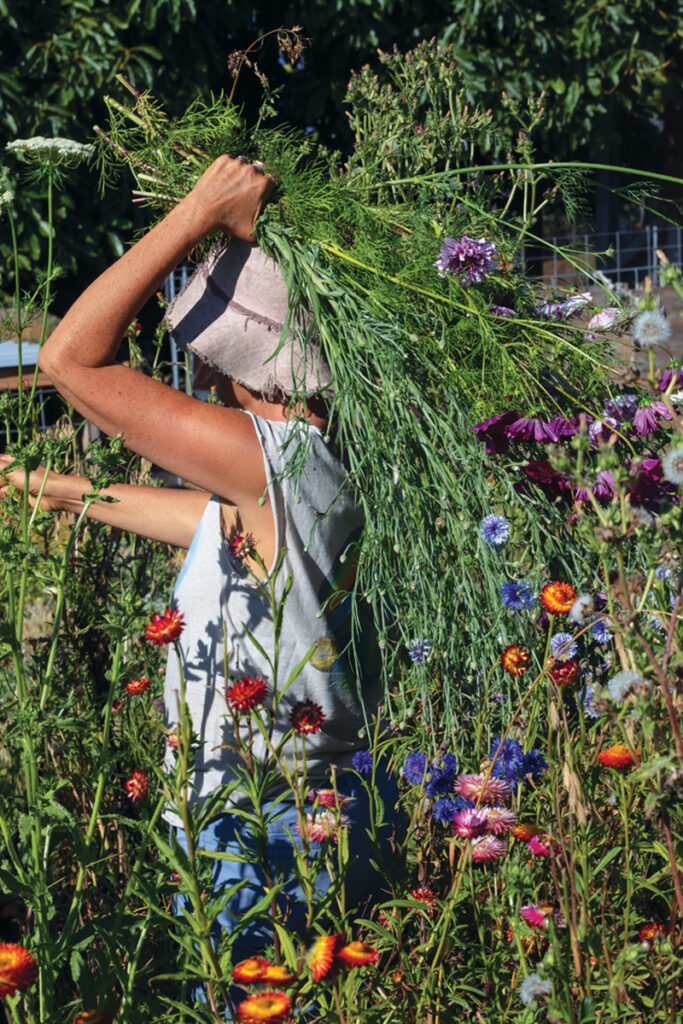
Ian Hughes
While blooms are incredibly important for garden health, biodiversity, and pollinator ecosystems, many popular plant choices are not in tune with our changing climate and water reserves. What you want to grow versus what you should be growing are new considerations we should all have in mind when planning our gardens.
Louesa’s ethos is in line with these changing resources. “Seasons differ from global regions, and region to region, I am endlessly fascinated by micro climates,” she explains. “I guess I’d say first observe and lean into learning as much as you can about the particular seasonality of where you live and lean into your loves and intuition. Each home has vastly different seasons, climates, water concerns, soil, etc.” A gentle reminder to be true to your locale and grow responsibly, the rewards are far greater.
It’s important to not feel limited by location, but rather be open to new plant admiration. Louesa admits, “Now that I live in Ojai I’ve come to appreciate hollyhocks—very drought-tolerant, bright, and happy without being too girly. Their seed pods are astounding and play a role in my upcoming book. My choices of flora are very different in Southern California than when I was living in Northern California.”
Louesa’s work proves that you don’t have to be bloom-centric when creating beautiful bouquets. We hope you’re feeling inspired to rethink upcoming spring and summer harvests, with an excitement to tap into your surrounding plant materials for unique seasonally appropriate arrangements. Here’s to growing and appreciating nature’s bounty in new ways this season!
Read the Current Issue Here!
Get one year of Sunset—and all kinds of bonuses—for just $29.95. Subscribe now!
